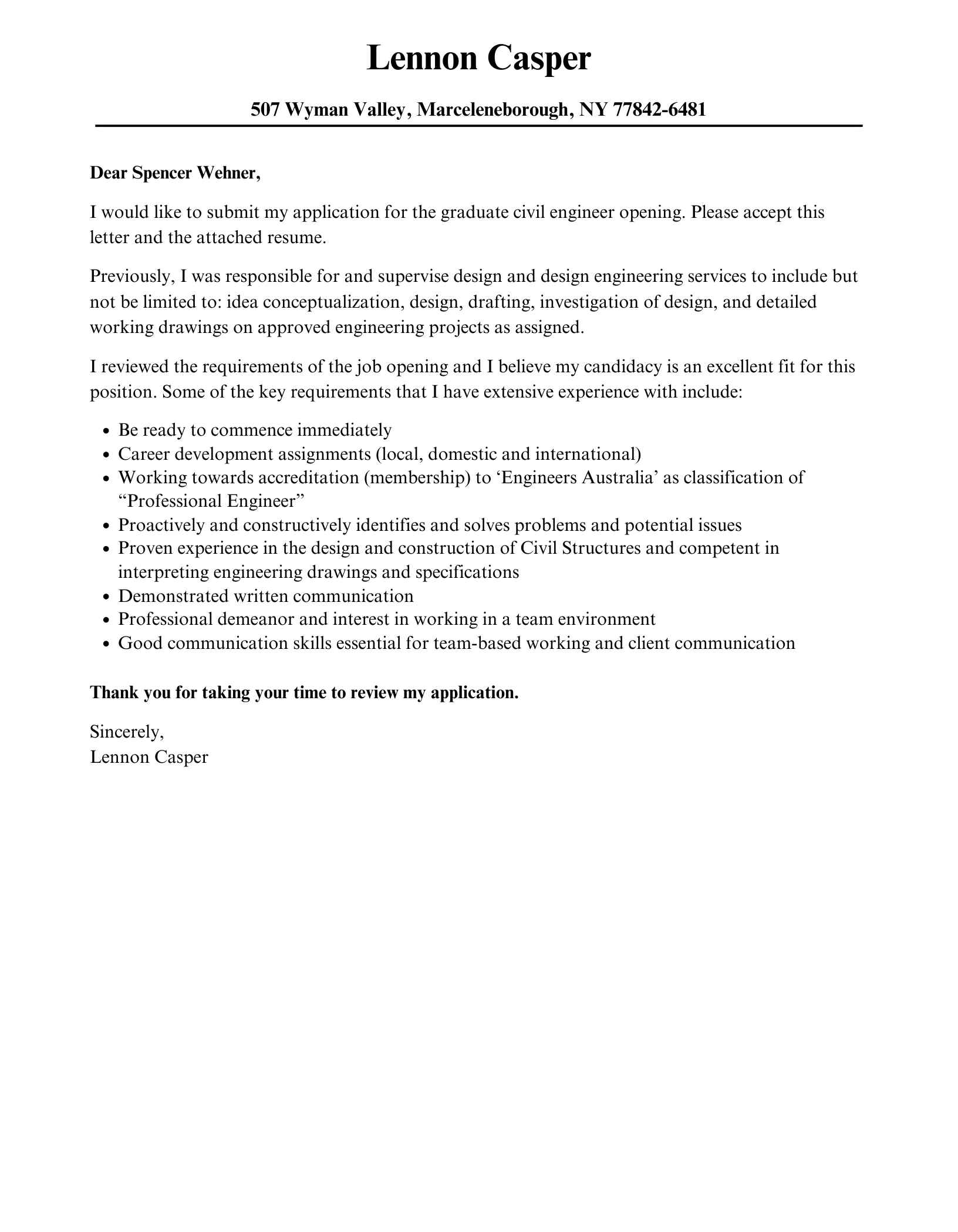Crafting the Perfect Engineer Cover Letter
As a fresh graduate engineer, your cover letter is your first, and sometimes only, chance to impress a potential employer. It’s more than just a formality; it’s your personal introduction, a snapshot of your skills, and a testament to your enthusiasm for the role. A well-crafted cover letter showcases your ability to communicate effectively, highlights your key skills, and demonstrates your understanding of the company’s needs. This guide provides a step-by-step approach to crafting an engineer cover letter that stands out from the competition and increases your chances of landing your dream job. Mastering the art of the cover letter is crucial in today’s competitive job market, where first impressions are everything. Let’s dive in and equip you with the knowledge and tools needed to create a compelling cover letter that gets you noticed.
Understanding the Purpose of a Cover Letter
The primary purpose of a cover letter is to introduce yourself, express your interest in a specific position, and explain why you’re a strong fit for the role. Unlike a resume, which provides a factual overview of your skills and experience, a cover letter allows you to tell a story. It allows you to connect your qualifications to the specific requirements of the job, demonstrate your personality, and convey your genuine interest in the company. Think of it as a sales pitch, where you’re selling your unique blend of skills, experience, and passion. A well-written cover letter adds context to your resume. It explains how your qualifications align with the employer’s needs. It showcases your communication skills, and it leaves a lasting impression. This is your opportunity to make a personal connection with the hiring manager and set yourself apart from other applicants.
Highlighting Your Key Skills and Achievements
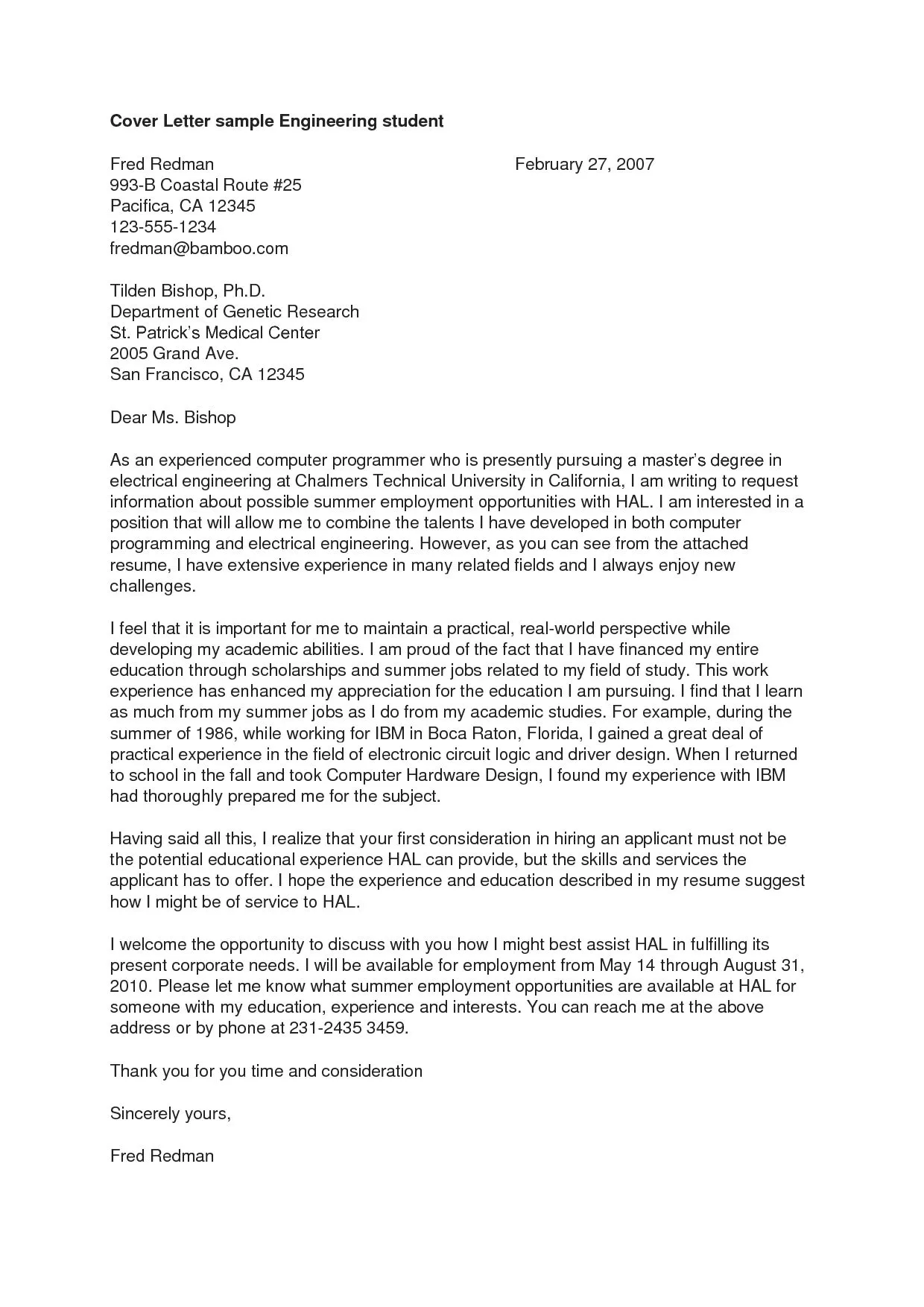
Your cover letter should be a showcase of your most relevant skills and achievements. Carefully review the job description and identify the key skills and qualifications the employer is seeking. Then, use specific examples from your academic projects, internships, or extracurricular activities to demonstrate those skills. Quantify your achievements whenever possible. Instead of saying “Managed projects,” say “Managed three projects, resulting in a 15% reduction in costs.” This adds credibility and provides concrete evidence of your abilities. Highlight projects where you demonstrated problem-solving skills, teamwork, or leadership. Even if you lack extensive professional experience, emphasize transferable skills like analytical thinking, communication, and adaptability. Tailor your examples to the specific requirements of the job, showing the employer that you’ve carefully considered their needs and are prepared to contribute immediately.
Technical Skills for Engineers
Engineering roles often require a specific set of technical skills. These can include proficiency in CAD software, programming languages (like Python or C++), experience with specific equipment or machinery, and knowledge of relevant engineering principles. When listing your technical skills, be specific. Instead of writing “Proficient in CAD software,” list the specific software you’re familiar with, such as AutoCAD, SolidWorks, or Revit. If the job description mentions specific software or technologies, make sure to highlight your experience with those tools. Consider creating a separate section in your resume to list your technical skills, making them easy for the hiring manager to find. Always back up your claims with examples of how you’ve used these skills in projects or internships. Be prepared to discuss these skills in detail during the interview.
Soft Skills for Engineers
While technical skills are essential, employers also value soft skills. These are the interpersonal and communication abilities that enable you to work effectively in a team, solve problems, and manage your time. Common soft skills include communication, teamwork, problem-solving, critical thinking, leadership, and time management. Provide examples of how you’ve used these skills in your projects or internships. For example, if you worked on a team project, describe your role, how you contributed to the team’s success, and any challenges you overcame. Showcase your ability to communicate complex technical information clearly and concisely, both in writing and verbally. In your cover letter, demonstrate these soft skills by the way you write. Use clear, concise language and provide specific examples to illustrate your abilities.
Showcasing Academic Accomplishments
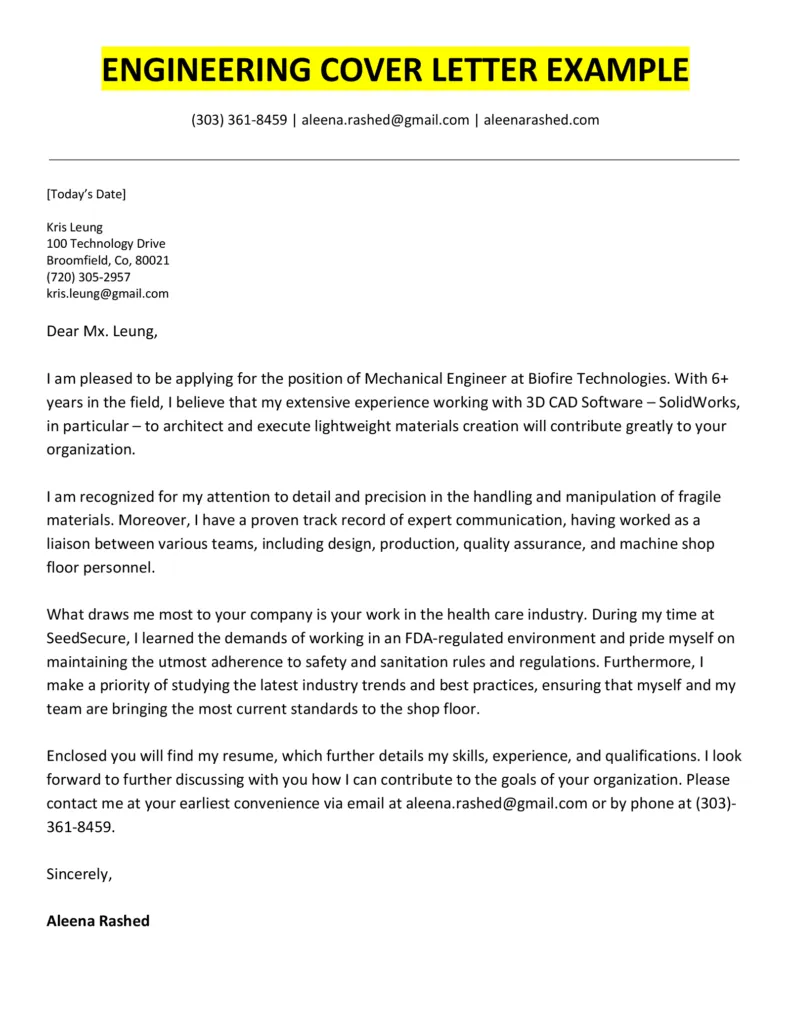
As a recent graduate, your academic achievements are a significant indicator of your potential. Highlight your GPA, especially if it’s above average. Mention any academic awards, scholarships, or honors you’ve received. If you completed a thesis or capstone project, briefly describe the project and the key findings or outcomes. This demonstrates your ability to conduct research, solve problems, and apply your knowledge. If you participated in any competitions or design challenges, be sure to include those experiences. They show your passion for engineering and your ability to work under pressure. If you have any publications or presentations, list them in your resume. In your cover letter, briefly mention your academic achievements and explain how they have prepared you for the role.
Relevant Coursework and Projects
Your coursework and projects are the best way to demonstrate your knowledge and skills. Focus on the courses and projects that are most relevant to the job you’re applying for. Briefly describe the projects, your role, and the key outcomes or results. Highlight any technologies or methodologies you used. Quantify your achievements whenever possible. For example, instead of saying “Designed a bridge,” say “Designed a bridge that could withstand a 10,000-pound load.” If the job description mentions specific areas of expertise, such as structural engineering or software development, emphasize the relevant coursework and projects. Tailor your descriptions to match the requirements of the job. This helps the hiring manager to see how your academic background aligns with the company’s needs.
Experience, Internships, and Extracurricular Activities
If you have any experience, whether it’s internships, part-time jobs, or volunteer work, be sure to include it. Describe your responsibilities and any significant achievements. Even if your experience isn’t directly related to engineering, it can still demonstrate valuable skills. For example, a part-time job in customer service can show your communication and problem-solving skills. If you participated in any extracurricular activities, such as engineering clubs, design teams, or sports teams, include those as well. These activities can showcase your teamwork, leadership, and time management skills. Tailor the description of your experiences to the specific job you’re applying for, highlighting the skills and achievements that are most relevant.
Tailoring Your Cover Letter to the Job Description
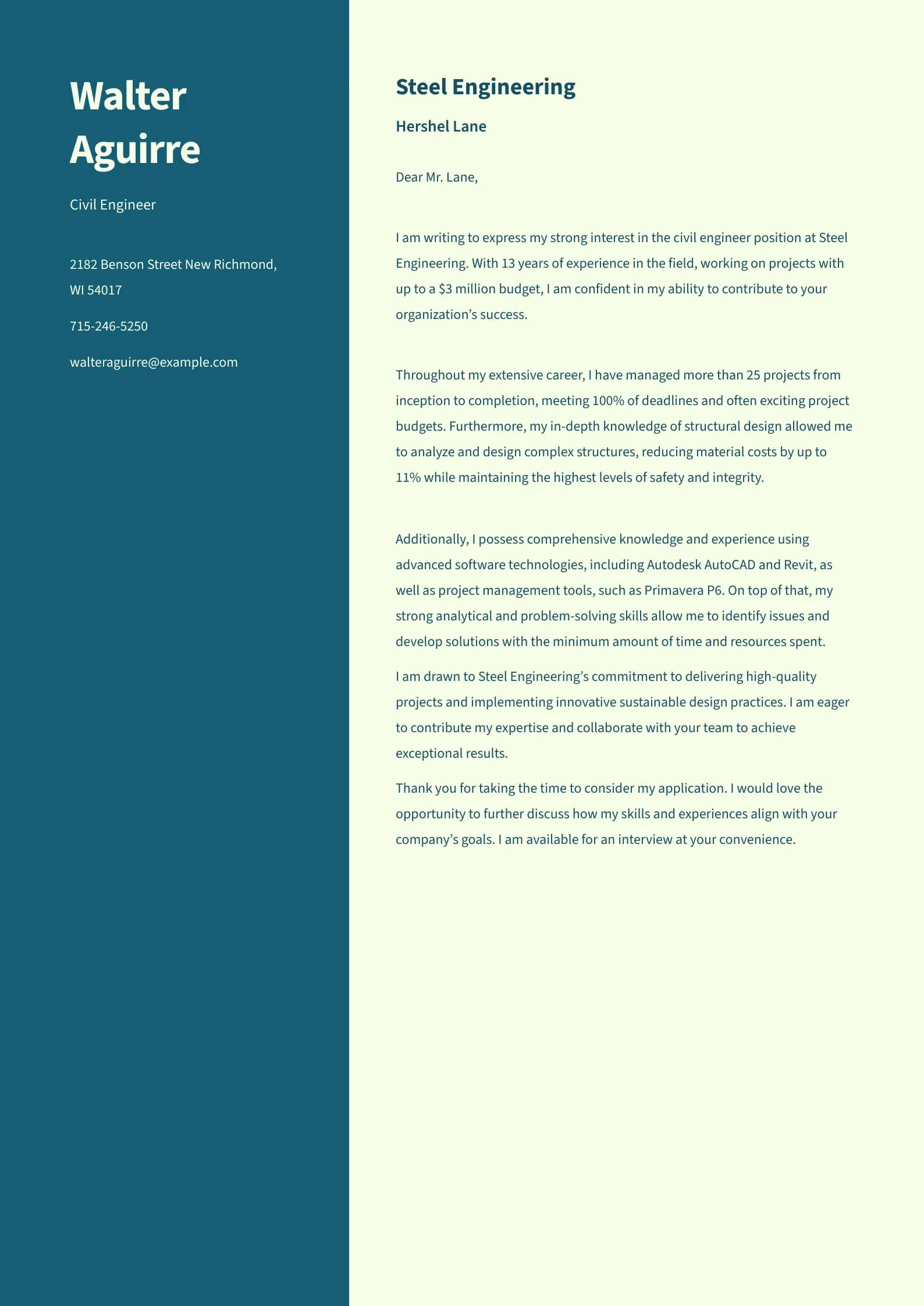
One of the most critical steps in writing a successful cover letter is tailoring it to the specific job description. Do not use a generic cover letter. Each letter must be customized to the particular position and company. Carefully read the job description and identify the key requirements and qualifications the employer is seeking. Use the same keywords and phrases that are used in the job description. This shows the employer that you understand their needs and have the skills to meet them. Address the specific requirements by providing examples of how your skills and experience align with the job’s demands. Explain how your skills and experiences match the listed requirements. This targeted approach increases the impact of your letter. Tailoring your cover letter demonstrates that you’ve taken the time to understand the role and are genuinely interested in the opportunity.
Researching the Company
Before writing your cover letter, research the company. Visit their website, read their mission statement, and learn about their products or services. Understanding the company’s values, culture, and goals will help you to tailor your cover letter and demonstrate your genuine interest in the opportunity. Find out about the company’s recent projects, achievements, or news. Mentioning something specific about the company in your cover letter shows that you’ve done your homework and are serious about the role. This level of detail demonstrates your genuine interest and makes you stand out from other candidates. Researching the company provides you with the information you need to tailor your cover letter and make a compelling case for why you’re the right fit.
Addressing the Specific Requirements
The job description is your roadmap. Use it to identify the specific requirements and qualifications the employer is seeking. Address each requirement individually in your cover letter, providing examples from your experience or academic projects that demonstrate your ability to meet those requirements. If the job description mentions specific software, tools, or technologies, make sure to highlight your experience with those. If they are looking for strong teamwork skills, describe your experience working on a team and the contributions you made. Focus on the skills, experiences, and knowledge that directly align with the job requirements. This approach demonstrates that you understand the role and are prepared to succeed.
Formatting and Structure for Impact
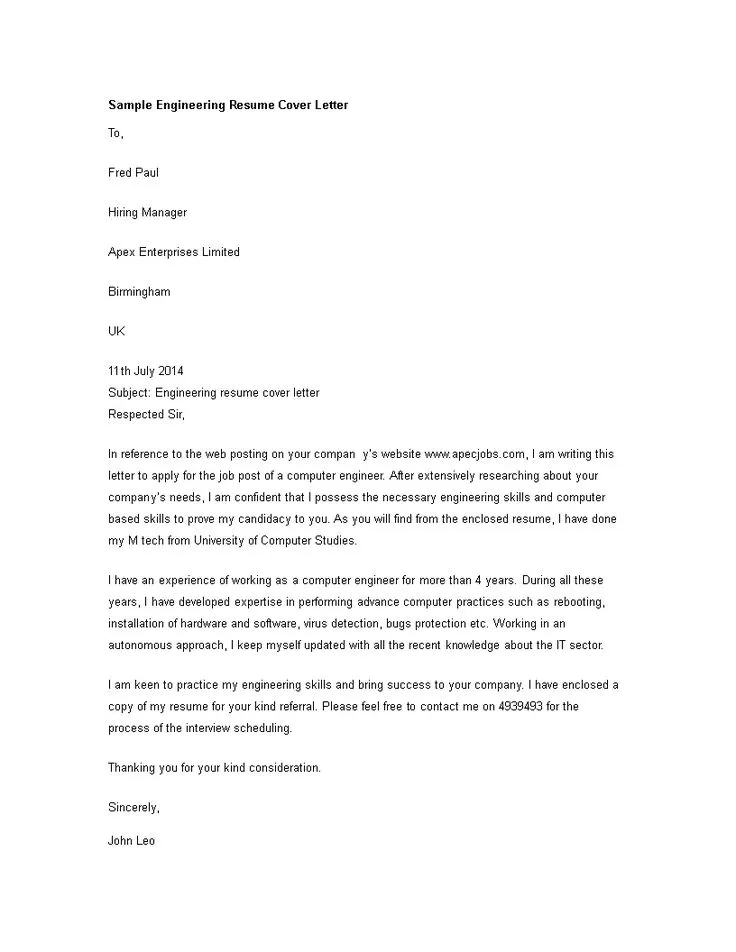
A well-formatted cover letter is easy to read and visually appealing. Use a standard font, such as Times New Roman or Arial, in a size between 10 and 12 points. Use clear headings and subheadings to break up the text and make it easy for the reader to find the information they’re looking for. Keep the letter to one page. Use concise and focused language. Avoid long paragraphs. Use bullet points to highlight key skills or achievements. Proper formatting and structure create a professional impression and make your cover letter more impactful. Pay attention to the overall layout and presentation. Use a professional font and ensure the letter is well-organized, with clear sections and concise paragraphs.
Header and Contact Information
Start your cover letter with your contact information, including your name, address, phone number, and email address. Also, include the date and the employer’s contact information, including the hiring manager’s name and the company’s address. If you don’t know the hiring manager’s name, try to find it on the company’s website or LinkedIn. Addressing your letter to a specific person is always preferable to using a generic salutation such as “To Whom It May Concern.” This shows that you’ve taken the time to research the company and the role.
Opening and Closing Paragraphs
The opening paragraph is your chance to grab the reader’s attention. State the position you’re applying for and where you saw the job posting. Briefly express your enthusiasm for the role and the company. In the closing paragraph, summarize your key qualifications and reiterate your interest in the position. Thank the reader for their time and consideration. Include a call to action, such as stating that you look forward to hearing from them soon or that you’re available for an interview at their earliest convenience. The opening and closing paragraphs frame the entire letter, setting the tone and leaving a lasting impression.
Body Paragraphs (Skills & Experience)
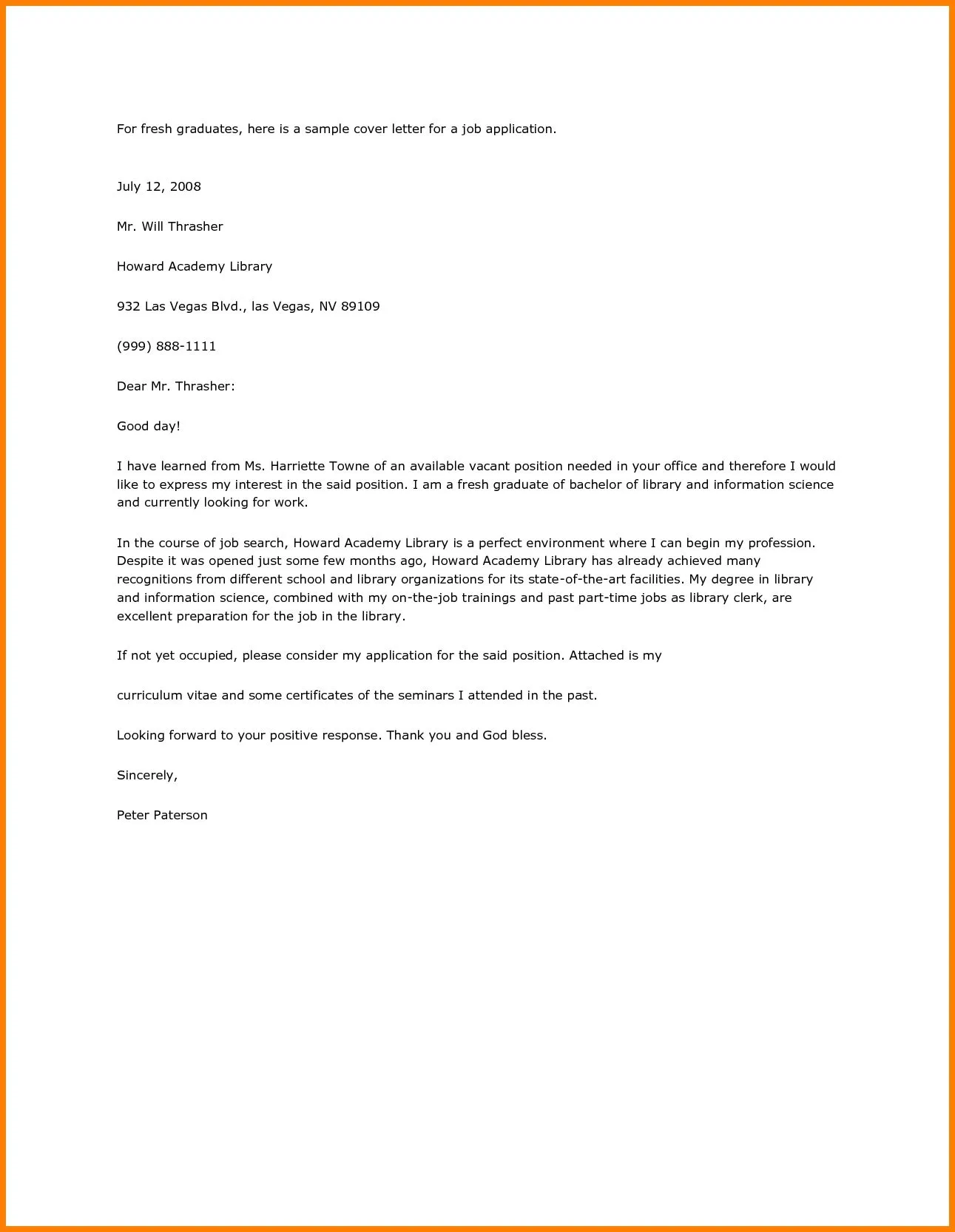
The body paragraphs are the core of your cover letter. This is where you provide specific examples of your skills, experience, and achievements. Use one or two paragraphs to highlight your most relevant skills and experiences. Each paragraph should focus on a particular skill or accomplishment. Start with a strong topic sentence. Then, provide concrete examples and quantify your achievements whenever possible. Use the STAR method (Situation, Task, Action, Result) to structure your examples and provide a clear and concise narrative. The body paragraphs should demonstrate your understanding of the role and your ability to meet the employer’s needs. Tailor these paragraphs to the job description and company research to make them as impactful as possible.
Keywords and Phrases to Include
Use relevant keywords and phrases from the job description throughout your cover letter. This helps the hiring manager quickly identify your qualifications and demonstrates that you understand the role’s requirements. Incorporate keywords related to your technical skills, such as specific software, programming languages, or engineering principles. Include soft skills such as communication, teamwork, problem-solving, and leadership. Use industry-specific jargon where appropriate. Be careful not to overuse keywords, which can make your letter sound unnatural. The goal is to seamlessly integrate keywords into your writing to create a positive impact and increase your chances of being selected for an interview. The strategic use of keywords can significantly improve your cover letter’s readability and relevance.
Common Mistakes to Avoid
There are several common mistakes that can hurt your chances of getting hired. Avoiding these pitfalls is crucial to writing a compelling cover letter. Here are some of the most common mistakes to avoid to significantly improve your chances of success.
Grammar and Spelling Errors
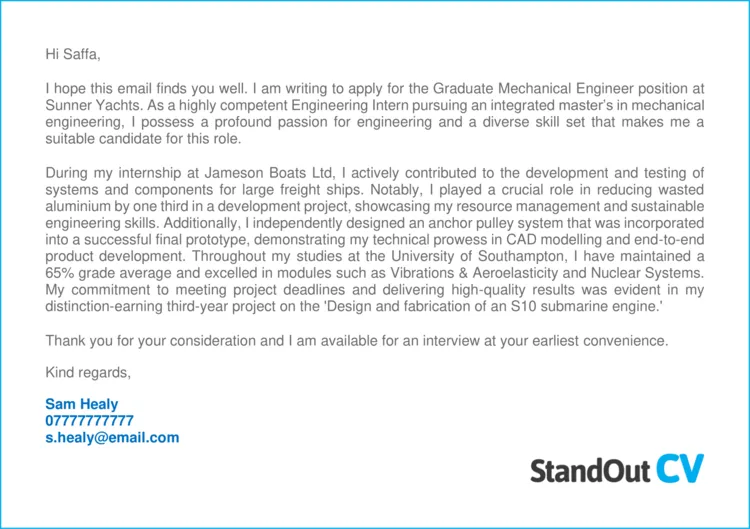
Grammar and spelling errors can damage your credibility and make you appear unprofessional. Always proofread your cover letter carefully before submitting it. Use a spell checker and grammar checker. However, don’t rely solely on these tools. They may not catch all errors. Ask a friend, family member, or career advisor to review your cover letter for any mistakes. A perfect cover letter shows attention to detail and a commitment to quality. Proofreading is not a suggestion, it is a requirement.
Generic and Vague Language
Avoid generic and vague language that doesn’t provide specific examples or details. Instead of saying “I have good communication skills,” provide a specific example of how you communicated effectively in a project or internship. Avoid clichés and overused phrases. Instead of saying “I am a team player,” describe your role on a team and how you contributed to its success. Use action verbs and specific language to convey your achievements. Avoid vague language and use concrete examples to showcase your skills and accomplishments. This will ensure that your letter is impactful and memorable.
Professional Tone and Language
Maintain a professional tone and language throughout your cover letter. Use formal language and avoid slang, jargon, or overly casual expressions. Show enthusiasm and professionalism. Avoid being overly familiar or informal. The cover letter is a professional document. It sets the tone for your interaction with the potential employer. Maintaining a professional tone and using appropriate language are crucial for making a positive impression.
Proofreading and Editing Your Cover Letter
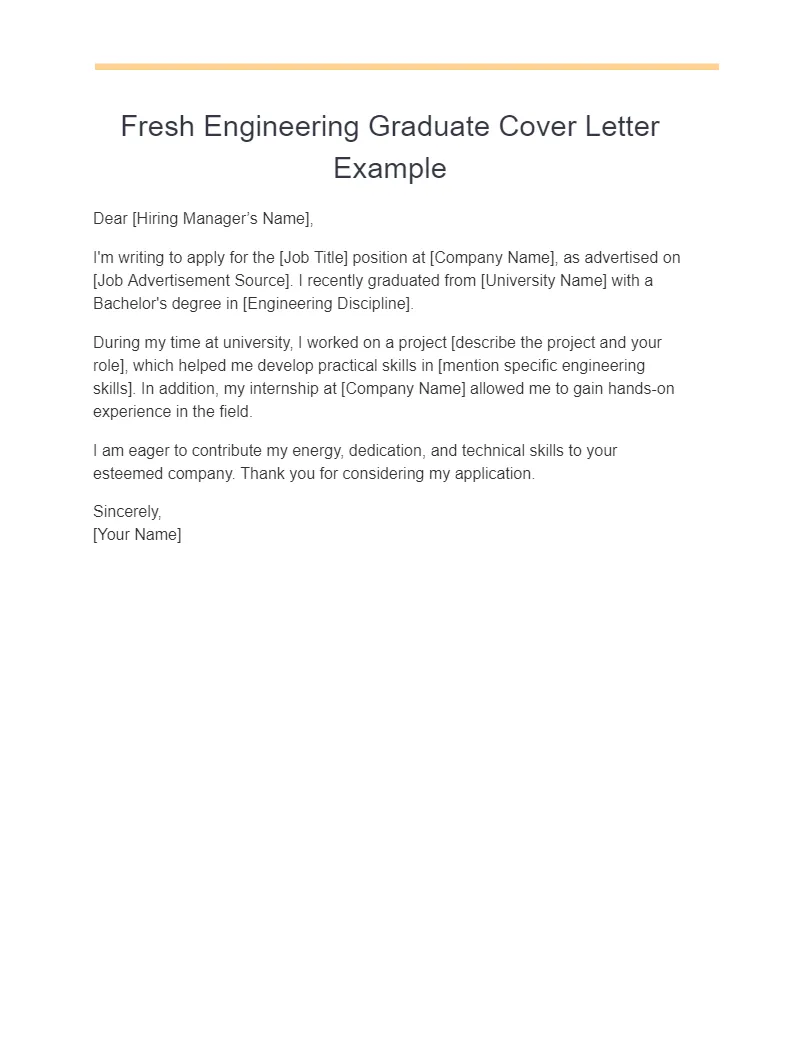
Proofreading and editing your cover letter is essential to ensure it’s free of errors and effectively conveys your message. Read your letter several times, looking for any mistakes in grammar, spelling, punctuation, or formatting. Print out your letter and review it on paper. Sometimes, it’s easier to catch errors when you see the document in a physical format. Ask someone else to review your cover letter. A fresh pair of eyes can often spot errors that you may have missed. Ensure all the information is accurate and relevant. This is the final step in crafting a professional cover letter, demonstrating your attention to detail and your commitment to presenting yourself in the best possible light.
